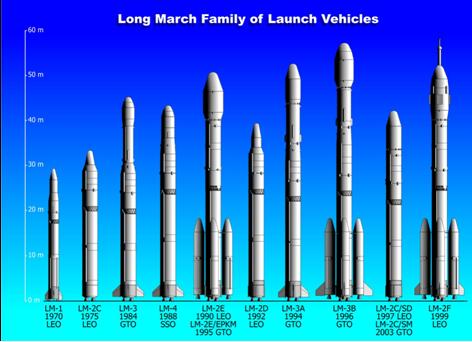Today, China is developing new generations of these launchers that will be based on more advanced technology and their performance will be higher than the current generation, their fuel will be less toxic, energy savings will reach 20%, and their reliability will reach 98%.
Tal Inbar, Valencia, special to the science site

Yong Yang, Defeng Hu, Menglun Yu, three engineers working at the Chinese Academy of Rocket and Launcher Technology, spoke before the Space Congress in Barcelona about their vision for developing a reusable launch vehicle - RLV based on the old LONG MARCH technology. This family today has eight members, each of which is used to launch satellites and spacecraft of different sizes and to different orbits (see photo).
Today, China is developing new generations of these launchers that will be based on more advanced technology and their performance will be higher than the current generation, their fuel will be less toxic, energy savings will reach 20%, and their reliability will reach 98%.
However, today's consumable launchers have an inherent disadvantage, and therefore there is a need to develop reusable launchers that are cheap, reliable, responsive and flexible, they are the trend in the future space transportation system.
This development is also required to strengthen China's competitiveness in the field of innovative technology for launchers.
The long-term goal is a reusable single stage to a runway that will take off horizontally, land vertically and operate just like a reliable and cheap airplane.
To achieve the goal, a step-by-step development approach will need to be taken. In the short term, the first generation will be partially reusable. In the medium term TSTO - two stages up to orbit and both are reusable, and in the long term a reusable launcher with one stage to orbit.
China's manned space program - a retreat from openness
One of the speakers yesterday was also Tang Xianming, director of China's manned program, within the Chinese Space Agency, who gave a quick overview of the Shenzhou program. It featured the Shenzhou-1 through Shenzhou-6 spacecraft
However, in sharp contrast to the openness that characterized China in the past on this issue, he was not ready to reveal any new information about the schedule of the next mission, about the one after which the docking system will be tested as well as the construction of the space station. It was a disappointing presentation and no one was allowed to ask questions.
